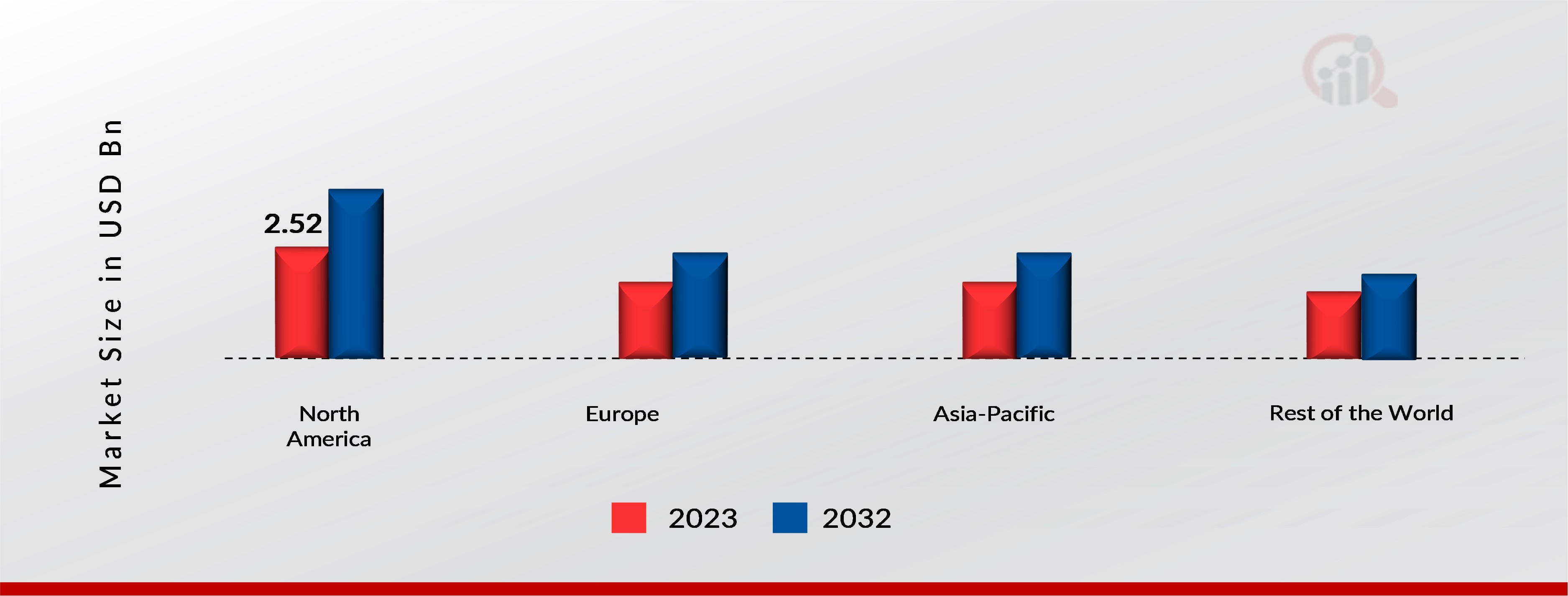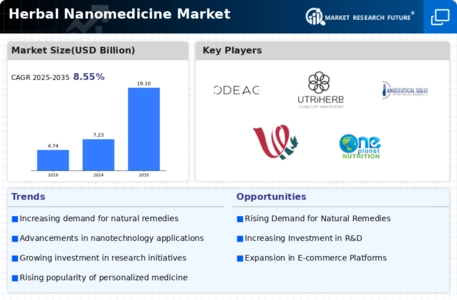By region, the market is divided into North America, Europe, Asia-Pacific, and the Rest of the World. North America accounted for the largest market share of over 38.36% in 2023, owing to the growing preference for natural and organic products, especially among the younger generation, increasing research and development activities in the field of nanomedicine, and presence of established players in the herbal medicine and nanotechnology industries.
Further, the major countries studied are: The US, Canada, Brazil, Germany, France, the UK, Italy, Spain, China, India, Japan, South Korea, and Australia.
FIGURE 3: GLOBAL HERBAL NANOMEDICINE MARKET, BY REGION, 2023 & 2032 (USD BILLION)

Source: Secondary Research, Primary Research, MRFR Database and Analyst Review
The Europe herbal nanomedicine market shows significant growth during the forecast year, i.e., 2024–2032, owing to the growing preference for natural and herbal remedies among European consumers, presence of established herbal medicine manufacturers in Europe, and regulatory framework is relatively supportive of herbal medicines, providing a conducive environment for the development and commercialization of herbal nanomedicines. For instance, Indena S.p.A. (Italy) and Nanoceutical Solutions (US), which has presence in UK and Ireland offer herbal nanomedicine products. Nanoceutical Solutions offers a range of supplements formulated to tackle a variety of health concerns, from nanoglutathione to nanoturmeric curcumin.
Incorporating effective supplements and antioxidants (in addition to healthy lifestyle choices and diet) can go a long way toward combating free radicals that can damage bodies, both inside and out.
The Asia-Pacific herbal nanomedicine market is the fastest-growing region during the forecast period owing to a growing geriatric population. This is because older adults often face chronic health conditions such as arthritis, cardiovascular diseases, diabetes, and cognitive decline. Many seek natural remedies to manage these conditions due to concerns about side effects from conventional pharmaceuticals. Furthermore, as per the Asia-Pacific Report on Population Ageing 2022, there were approximately 670 million people aged 60 or older in Asia-Pacific in 2022. Also, it has been estimated that the number will double to approximately 1.3 billion people by 2050 in Asia-Pacific.
Moreover, China herbal nanomedicine market held the largest market share in 2023, and India Herbal nanomedicine market is the fastest growing market in the Asia-Pacific region.
















